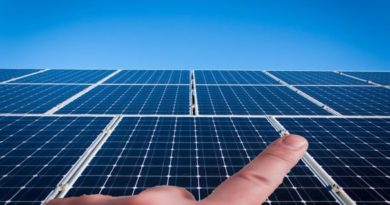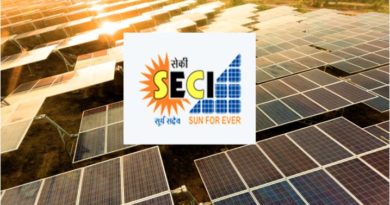Solar Rooftop. Why Gujarat Vs Delhi is a walkover for Gujarat
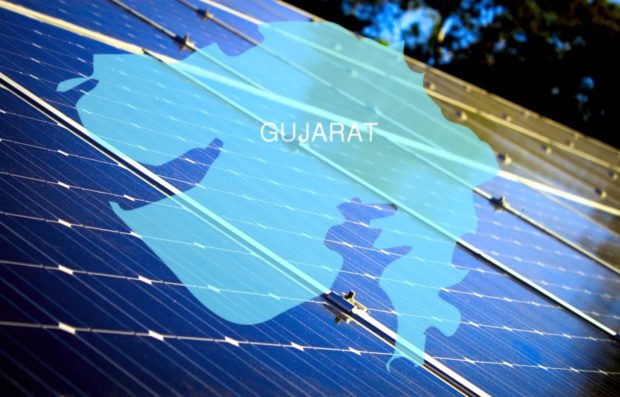
The Gujarat Energy Development Agency (GEDA) recently released its scheme for Rooftop Solar Projects for the year 2018-19. The agency has released a detailed report which clearly mentions the installation costs of a residential rooftop system from 1kW to 10kW after central and state subsidy deductions.
Solar Rooftop System to brighten every home with Clean, Safe, Renewable and affordable energy pic.twitter.com/Ek95bEnNoM
— CMO Gujarat (@CMOGuj) September 26, 2018
Cost of various capacity Solar Rooftop PV system discovered by the government agency were released in the report, along with a list of GEDA Empaneled vendors liable to install the systems at the mentioned prices.

At first glance, the pricing is comparatively much lower than the national capital without any considerations on subsidy deductions. Beyond these initial pricing numbers, GEDA in its scheme has also mentioned the final customer price, viable for any residential consumer of any DISCOM, who is having residential property in his name.
Besides the 30% Central Government subsidy of the cost of the solar system, the Government of Gujarat will provide a subsidy of Rs.10,000/kW subject to a maximum of Rs.20,000.
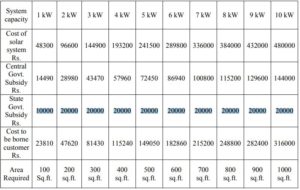
Maharashtra based Waaree Energies Pvt. Ltd. which is one of the biggest energy solutions provider in the list of GEDA Empaneled Vendors confirmed that the subsidy mentioned in the scheme will, in fact, be deducted from the customer’s final price. Automation and Engineering Services another listed vendor confirmed the claims of the Energy Agency. However, this was at variance with a couple of other vendors on the list, who claimed that the state subsidy was meant for them.
At present, in Delhi, there is no upfront subsidy that an individual homeowner can draw from the state government when installing a rooftop system. However, the state government recently approved the Mukhyamantri Solar Power Scheme under which each individual house owner will need to provide an initial installation charge of Rs 55,000/kW to the service provider beyond which the household will be eligible for a subsidy of Rs 2/unit under the Generation Based Incentive (GBI) provided through the scheme for a period of 5 years.
Based on these conditions, for comparison consider a 2kW system installed in two houses in Gujarat and Delhi that consume 300 units of electricity every month, to discover the time it will take a household for a complete return on investment.
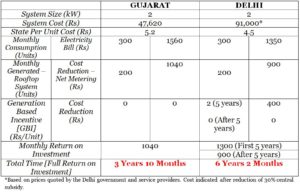
Thus, under the present conditions, a household in Gujarat with a 2kW rooftop system that consumes the 300 units of electricity and generates the 200 units from its rooftop system will complete a return of investment nearly 2 years and 4 months before an identical criteria’s based household in Delhi.
A substantial period of time in a country in which the primary motive of every homeowner shifting to solar rooftop systems is cost savings. Besides all the positives, there still seems to be some uncertainty in the adoption of the new scheme. When contacted a few GEDA Empaneled Vendors mentioned that the entirety of the state subsidy will be provided to them and not the customers. While one empaneled vendor had no apparent knowledge of the Rs 10,000/kW state subsidy being provided by the state government.
Of course, if you think the difference is surprising, then consider the huge difference in ambitions too. Gujarat has a solar rooftop target of 3200 MW by 2022, while Delhi has no such target, and with an installed base of 40 MW, it really doesn’t look like this number can go beyond even 200 MW in the best scenario, by 2022.

